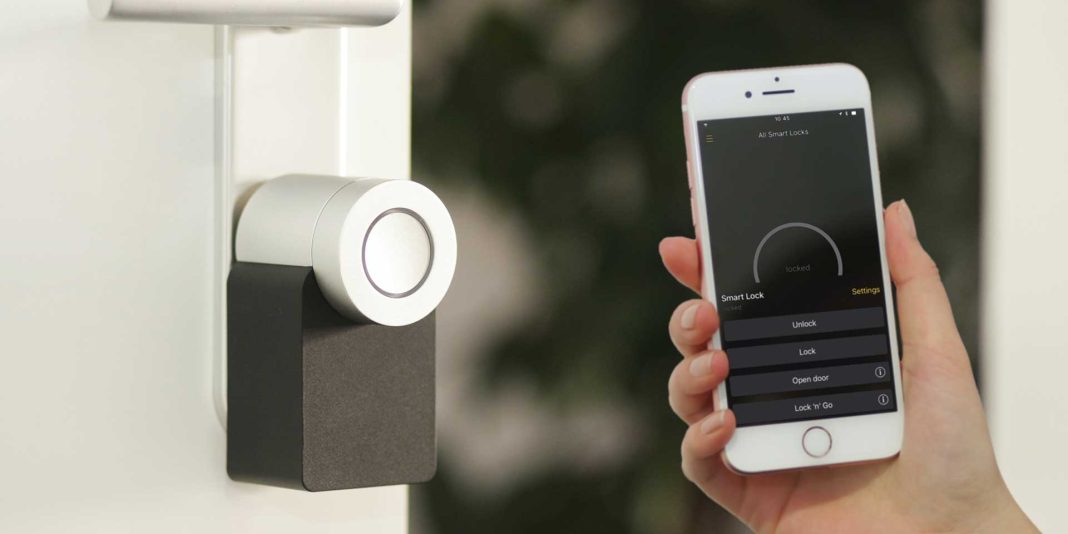Have you heard the term “Internet of Things” and wondered what it meant? In a smart home, many devices can now be connected to the internet so they can be controlled through automation and apps on mobile devices.
The range of options in this category seems to be expanding faster and faster with market volume expected to reach $47 million and home penetration to reach 52.4% by 2024, according to statista.
Here are some of the reasons smart home technology has become so attractive:
Convenience – Smart devices can make our day-to-day lives easier through automation and remote control.
Improved security – Cameras and locks can be controlled and monitored from anywhere using apps on mobile devices. Replacing keys with keypads eliminates copies of keys floating around that anybody can use at any time.
Energy efficiency – Greater control over a thermostat through remote control apps and automation means there is less wasted heating and air conditioning. And consumers can monitor their energy usage to optimize how they use energy in their home.
Cost savings – Redesigned products from manufacturers for the smart device market are usually re-engineered to be more energy efficient than their older relatives.
Smart Home Categories
Let’s look at the main categories that smart home and home automation products generally fall into.
Security
Smart home products in the security category are very popular because they offer so much flexibility and add so many enhancements when compared to traditional security systems. And they are a lot cheaper.
Here are some of the top features that attract homeowners to smart security systems:
- Enter your home without a key
- Provide keyless access to your home to specific people for specific time frames
- Monitor your cameras from anywhere
- Add wireless cameras quickly and easily
- Watch recordings taken from your cameras from anywhere
- Activate or deactivate your alarm system from anywhere
- See and speak to someone at your door through your smartphone
Smart Locks
Here are some tips on choosing smart locks with a price comparison for 10 different products from pcmag.com.
Home Security Systems
Take a look at top picks in home security systems from wirecutter.
Lighting and Climate Control
Lighting and climate control devices are also very popular smart home options. They are simple to install and offer so much bang-for-the-buck in terms of convenience, energy efficiency, and quality of life.
Lighting
With smart lighting devices, walking into a room can activate a ceiling fan or lights. Lights can be controlled via apps with elaborate scheduling and randomization options to make a home appear to be occupied. Some systems offer advanced lightbulbs that support a myriad of color possibilities and programming, adding a lot of aesthetic value that isn’t possible with traditional lighting options.
Climate Control
Smart thermostats improve your comfort and they help your wallet. A home’s climate control can be easily upgraded to a smart climate control system so the owner has remote control and access to many automation features.
There’s a lot to learn before choosing a smart thermostat, so a thorough guide will help you understand the options and narrow down choices for your home. Here’s a comparison article from techhive to help you get started.
Appliances
How smart do you want your refrigerator to be? It may not do your kid’s math homework or cook a meal, but a smart refrigerator can have some handy tricks up its sleeve. It might let you see it’s contents from your smartphone so you can confirm if you need to buy more eggs. Or it might have a display that shows calendar items and notes controlled from your phone. Or it might send you alerts for different situations such as an open door. Some of them, such as Samsung’s Family Hub, will let you play music, watch TV and other things you wouldn’t normally expect to do on a refrigerator.
Other smart appliances include things like coffeemakers, remote control vacuums, frying pans that communicate with your phone when it’s time to flip, ovens that recognize foods and cook them automatically, and bar-top scales that measure the perfect amount of ingredients for any recipe you want in the companion app running on your phone.
Voice Assistants
These devices can serve as a central hub for your smart devices in your home through voice commands. You may not be able to control absolutely everything in your home but it’s possible to control many of them. It all comes down to compatibility and what kind of control you need.
Compatibility comes down to how popular a platform is with developers. The more developers support a platform, the larger number of devices will work with the platform. According to a study by Adobe Analytics, these are the platforms developers prefer in order of popularity:
Amazon Alexa
Google Assistant
Apple Siri
Microsoft Cortana
Samsung Bixby
For a comparison guide to help you get familiar with features and other considerations, check out this voice assistant article on Reviews.com.
Choosing Products
One thing to be aware of is that you often cannot mix and match products from different manufacturers and have everything working reliably. You may end up with products from different manufacturers that work independently from each another. For the greatest compatibility between devices such as your voice assistant and your smart thermostat, it’s important to think about the features you really need and determine which products cover most of your required features.


